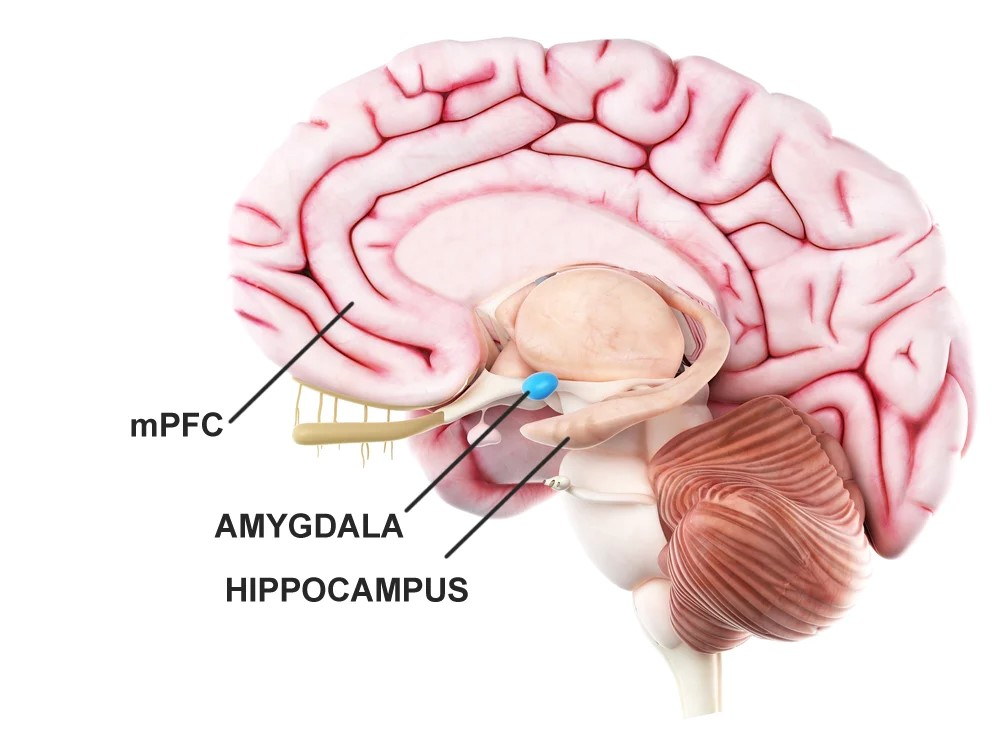
- +31 634359627
- Lindengracht 40, Amsterdam
- giustina@coaching-rewired.com
- kvk 87439700
Monthly articles in your inbox!

Daily events can trigger negative emotions and cause us to react with avoidance or aggressive behaviors when they resurface painful memories. While this fear response was beneficial for survival, its excessive activation in the absence of real danger can disturb our ability to think, or make decisions, and hinder our experience of joy, creativity, and engagement.
The primitive part of our brain, the limbic system with its amygdala, is prone to overreact when we’re tired or drained. In such times, our prefrontal cortex, responsible for executive functions, struggles to respond effectively.
If you’re interested in understanding how a person’s mind works when they’re triggered, I can elucidate it with a scenario involving two characters and the key components in their brains.
Liam is a talented artist who tends towards rigid thinking and perfectionism;
Maya, his partner, has a more carefree attitude and challenges Liam’s beliefs.


The following narrative unfolds across three levels:
Liam is in his studio, immersed in his painting. Suddenly, his phone buzzes — it’s Maya inviting him to an art exhibition. Politely, he declines due to his imminent deadline. However, the short conversation with Maya, who questions why he’s still working on the same painting, triggers an emotional shift in him. Liam yells at Maya and hangs up the phone. As he goes back to his painting, he starts to feel overwhelmed by a sense of inadequacy. Looking at his artwork, his quest for excellence falls short, leaving him doubting his self-worth.
Inside Liam’s brain: Maya’s words act as a cue for the Memory Expert, which links the current experience of judgment with a past event where Liam’s work was criticized as mediocre. The Emotion Specialist interprets this match as a threat to Liam’s self-worth and takes complete charge by preparing the body to fight or flee with the release of cortisol, a stress hormone. As a result, Liam’s heart rate escalates and he starts to panic.

We can’t consciously activate the release of stress hormones to prepare our body to react. The amygdala, upon detecting potential danger by matching a stimulus with a past memory in the hippocampus, triggers an automatic fear response that prepares our body. Evolutionarly, this system helped us survive, yet it may hinders rational cognitive reactions in situation primarily characterized by psychological, rather than physical, threats.
Liam tries to rationalize and mitigate his fear by reflecting on his past artistic achievements, but his efforts prove ineffective. He succumbs to the belief that his prior successes were merely due to luck, leading to fear of being exposed as mediocre among his peers.
Inside Liam’s brain: the Leader intervenes to regulate the fear response. Nevertheless, due to stress, the Emotion Specialist overrides the Leader’s influence. As a result, Liam experiences anxiety, clinging to the ingrained belief that he cannot afford any mistake as it would show him as a failure.
The rational part of our brain, the prefrontal cortex, intervenes when we are scared, guiding the decision-making process and our behavior. However, in case of high stress, as for Liam, the Amygdala might override the Prefrontal cortex making us unable to think clearly and have access to our higher executive functions. This phenomenon is known as Amygdala Hijack.
Liam remains at home, anxious and stressed. When Maya joins him, they discuss his beliefs and behavior. Liam opens up about his fear of failing his new project and how this could affect his self-worth. Maya reassures him, emphasizing that Liam’s identity encompasses more than just his creative work and that his value isn’t solely tied to it. She takes a step further and questions why he can’t take a break and enjoy life. Liam grows defensive, yelling at Maya for not understanding him.
Inside Liam’s brain: the Emotion Specialist interprets Maya’s words as a threat to Liam’s self-esteem and triggers again a fear response. The Memory Expert recalls past family conflicts. This readies his body again for fight or flight, releasing cortisol. As a result, the Leader, which aims for balance and clarity, becomes impaired again, leading to feelings of insecurity and self-doubt. With the Emotion Specialist still in control, Liam’s ability to think clearly and make reasoned decisions is hindered. He becomes defensive and aggressive, entering a state of heightened emotional arousal.
When someone is in an intense emotional state as Liam, confronting them with logical arguments to challenge their assumptions might backfire. It might get them defensive with the result of escalating the conflict.
Observing Liam’s emotional shift, Maya approaches him with empathy and attentive listening aiming to alleviate the tension in their conversation. She validates his feelings and fears.
Inside Maya’s brain: The Leader detects Liam’s agitated emotional state and senses his difficulty in accessing higher brain functions. To avoid escalating the situation and prolonging Liam’s emotional response, the Leader guides Maya in managing her emotions. Instead of using logic that might further activate Liam’s amygdala, Maya responds with compassionate listening.
Creating a non-judgmental connection using empathy can help the person calm down and regain access to their higher executive functions.
Maya’s composed and understanding response surprises Liam, making him feel acknowledged and heard. As Liam hugs Maya, he regains a broader perspective on his life and becomes receptive to Maya’s logical arguments.
Inside Liam’s brain: The hug prompts the release of oxytocin. Feeling understood and accepted also elevates oxytocin levels, which contributes to the extinction of the fear response, restoring harmony between the Emotion Specialist and the Leader.

When a person feels understood and accepted, oxytocin release can increase feelings of safety and connectedness, which in turn can help regulate emotional arousal and reduce conflict. This highlights the importance of empathetic listening and creating a non-judgmental environment to restore equilibrium between the amygdala and the prefrontal cortex.
After a night of restless sleep, Liam wakes up feeling physically drained but with a newfound awareness of his tendency towards rigid thinking. Fueled by this realization, he decides to seek guidance to reshape his mindset.
With the help of a coach, Liam gains insights into the impact of his extreme thinking in shaping his feelings and actions every day. He learns that accepting his imperfections and flaws is the best way to move forward with confidence and connect with people around him.
Inside Liam’s Brain: As Liam engages in this process, his brain experiences notable shifts. The Leader starts to play a more active role and becomes more adept at moderating his responses, allowing Liam to gradually detach from rigid thought patterns.
Over time, Liam starts building a healthier and more fulfilling relationship with Maya. They work together to regulate their emotions and think critically about their experiences. This involves reflecting on what they have learned from their successes and failures, identifying patterns and themes in their behavior, and challenging their assumptions about themselves and others. By engaging in this type of reflective thinking, they develop a deeper understanding of themselves and their relationship.
Inside Liam’s and Maya’s brains: over time new neuronal connections replace old ones.

Neurons that fire together wire together! When Maya and Liam engage in reflective thinking, their prefrontal cortex can interact with their hippocampus, which is responsible for storing and retrieving memories. By reactivating and reconsolidating past memories in the hippocampus, they can create new, more adaptive associations and beliefs that support their growth mindset.
Liam’s transformation illustrates the profound interplay between his thoughts, emotions, and brain functions. As he navigates his journey towards a more flexible mindset, his prefrontal cortex and limbic system interact intricately. The heightened self-awareness catalyzed by his efforts allows him to step back from rigid thinking, making room for personal growth, improved relationships, and enhanced emotional well-being.

What Got You Here Won’t Get You There

The Amygdala Hijack and The Response of The Prefrontal Cortex
Monthly articles in your inbox!
© 2025 Rewired Life & Executive Coaching All Rights Reserved.